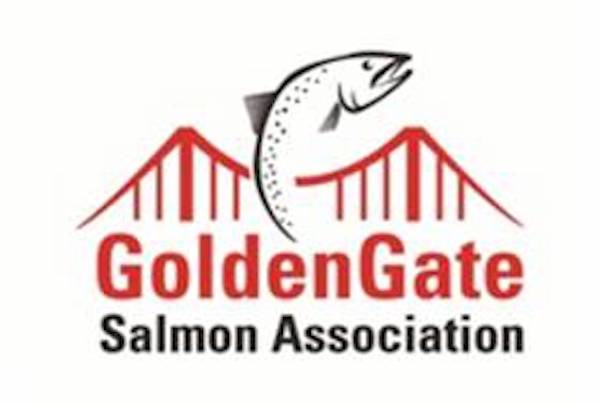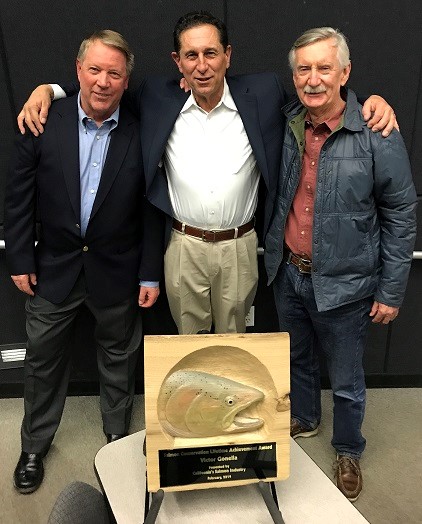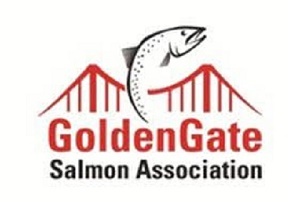From Sportfishing
Fish Report for 4-2-2019

Background on Todays and Future Flood Releases
4-2-2019
John McManus
“Recently, to keep communities safe from floods, Central Valley dam operators are opening the dams and making big water releases down the rivers. This frees up reservoir space to handle runoff from snowmelt or the next storm. In addition to protecting the public, these flood control dam releases provide important environmental benefits. Generally, they’re really good for salmon.
When salmon fishermen look at these big water releases from dams we see fast flowing, muddy waters breathing new life into damaged rivers, uncovering and moving gravel to where it’s needed by spawning salmon and washing away damaging sediment from the aftermath of logging, fires and low water flows. We see murky river flows helping to transport and hide baby salmon from predators and guide them downstream towards the ocean. We see the few remaining low lying floodplains being inundated again, as they were for time immemorial until we built levees and disconnected 97 percent of these essential salmon rearing habitats from our rivers. On the few remaining floodplains, baby salmon find a safe place to eat and grow. We see river side channels, previously clogged with sediment, instantly swept clean and revitalized, providing more rearing habitat for baby salmon. These high flows are needed to allow river channels to cut their own path and meander naturally. They allow riparian plants to germinate and thrive, all of which benefit salmon. However, with these flood control releases, dam operators must take care on the backside of the storms to bring releases down slowly so young fish don't get stranded in pools suddenly cut off from rivers.
We see these rare pulses of extra water flowing through the Delta, ripping out acres of invasive plant growth that strangles waterways and clogs water intakes and boating access. We see waters polluted by ag runoff being diluted and washed away.
These life-giving flood waters used to be normal events in California until we dammed all of our salmon rivers. Our native wildlife evolved to thrive in these conditions and have gone into a nosedive since the advent of dams and unsustainable reservoir operations. While good for salmon, these flood pulses are bad for non-native fish that eat baby salmon and the invasive clams and shrimp that compete with them for food.
Today it's increasingly rare for Mother Nature to overcome the power of Central Valley dams and force flood control releases but when she does, all of nature downstream, especially the salmon runs, thrive. That’s because they all evolved to take advantage of, and need, periodic high flows. Not only do salmon and other wildlife thrive, so too do those human communities that depend on salmon and a healthy, functioning ecosystem.
It’s critical to note that these life giving flows are not protected by any current regulatory requirements. That’s an oversight. Advocates of new dams often argue that high flows are being “wasted to the sea.” Nothing could be further from the truth. In fact, it is only when flows exceed our capacity to capture them that native fish like salmon have a chance to rebound.
State agencies, particularly the State Water Board and the California Department of Fish and Wildlife should adopt updated science-based standards that protect more of these needed high flow events, to continue providing essential benefits for salmon, the salmon fishing industry, and the entire Central Valley natural resources. That’s exactly what the State Water Board started last December, when they adopted new flow standards for the San Joaquin River and its tributaries. Governor Brown stepped in at the last minute and tried to derail their efforts. Governor Newsom is hopefully wise enough and environmentally aware enough to appreciate the way our natural systems work and try to protect them.”
John McManus
President
Golden Gate Salmon Association
650-218-8650
GGSA president John McManus is a long-time salmon fisherman and salmon advocate. He comes from a varied background that includes ten years of commercial salmon fishing in southeast Alaska, 15 years producing news for CNN and more recently, 11 years doing publicity and organizing for the public interest environmental law firm Earthjustice. Work at Earthjustice included organizing and publicity supporting restored salmon fisheries in the Columbia, Klamath and Sacramento rivers.
A San Francisco native, Muni Pier and Lake Merced were the places where he first learned to tie a fishing line, bait a hook, and cast. He’s a long time member of the Coastside Fishing Club and keeps a boat part of the year in Half Moon Bay.
From the 1970s on he spent a lot of time in the north coast salmon communities of Bodega Bay, Pt. Arena, Fort Bragg and Eureka. As salmon runs declined in the 1990’s, he got a front row seat to the demise of these communities, something that fuels his advocacy for salmon and salmon communities to this day.
The Golden Gate Salmon Association is a coalition of salmon advocates that includes commercial and recreational salmon fisherman, businesses, restaurants, a native tribe, environmentalists, elected officials, families and communities that rely on salmon.
GGSA’s mission is to restore California salmon for their economic, recreational, commercial, environmental, cultural and health values.
Currently, California’s salmon industry is valued at $1.4 billion in economic activity annually in a regular season and about half that much in economic activity and jobs again in Oregon. The industry employs tens of thousands of people from Santa Barbara to northern Oregon. This is a huge economic bloc made up of commercial fishermen, recreational fishermen (fresh and salt water), fish processors, marinas, coastal communities, equipment manufacturers, the hotel and food industry, tribes, and the salmon fishing industry at large.
< Previous Report Next Report >
More Reports

3-7-2019
GGSA Founder Victor Gonella receives, state, federal and fishing industry awards On February 16, friends, associates, fellow fishermen, and dignitaries gathered...... Read More

2-27-2019
Today, officials forecast 379,632 adult Sacramento Valley salmon are now in the ocean off the West Coast, compared to 229,400 a year...... Read More

Website Hosting and Design provided by TECK.net